
Alaska to Chicago on Straight Floats
My Adventurewas living in Anchorage, Alaska, deep into my professional career as an engineer, had a C172XP on floats, and was enjoying life. My professional responsibilities required attendance at a meeting in Chicago that summer. I decided to travel there in the XP and make it a flying vacation. My friend agreed to come along.

Generally Affordable? The Truth About Flying Costs
OpinionThe economics of flying is not for the faint of heart. In fact, the average cost of just getting your “license to learn” is now hovering around the $20,000 mark. And if that number doesn’t faze you, then let me sprinkle in some rampant inflation, a tight insurance market, and just the high opportunity cost of staying current—let alone proficient—into the mix.
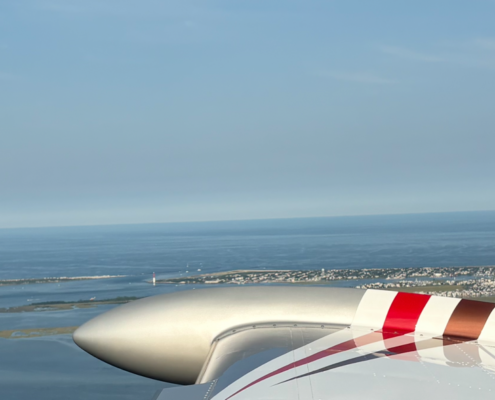
Friday Photo: Barnegat Light and Lighthouse
Friday PhotoAn evening slow flight over Ocean County barrier island in New Jersey at 1,200 feet. Excellent weather, no winds, and CAVU environment with the Barnegat Inlet and summer boaters below in the Barnegat Bay.

When Special VFR Is the Right Call
I was thereAt 5:30 a.m., I awoke to light rain—the forecast had arrived sooner than expected. By midday the rain had tapered, but the ceiling stubbornly remained at 900 feet. Visibility was excellent, around 10 miles. A check of nearby METARs showed clear skies just a few miles north, with ceilings above 5,000 feet and improving. I realized this was a classic SVFR moment. I didn’t want to file IFR. Conditions were VFR just outside the Class D surface area; the only obstacle was the low ceiling at KJQF.

Spatial Disorientation: I Thought It Couldn’t Happen to Me
I Can't Believe I Did ThatI began climbing to get between layers, intending to stabilize and then request IFR. But as I entered the clouds, what I thought could never happen did. I was in an unusual attitude: 45 degrees banked and nose down. For a moment, I considered pulling the CAPS parachute. I had often wondered if I’d have the presence of mind to use it in a real emergency. After this, I know the answer is yes. But I also realized I could recover.
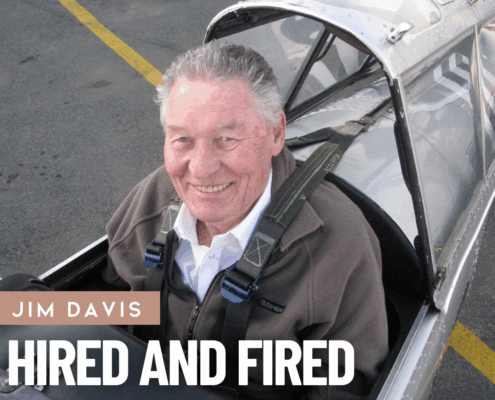
Hired and Fired
I was thereMy duties at Placo included making tea, polishing aircraft, vacuuming interiors, and blacking tires. Zingi mentioned I’d occasionally fly with the big boss, who feared a heart attack and wanted another pilot aboard in case he collapsed. I knew my meager skills would do little to delay our demise should Old Piet falter at the controls.
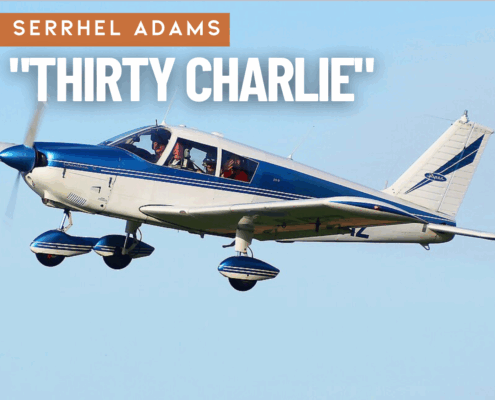
“Thirty Charlie”
I was thereEddie was in his 60s when I met him, sitting in his hangar office. I introduced myself, but he never used my name. To him, I was “Ace,” like all his students. Eddie was incredibly personable and sold me on flying with him from that first meeting. He flew a Piper Cherokee 180, N7630C, and his rate—aircraft, fuel, and instruction—was $40 an hour. I booked my first flight.
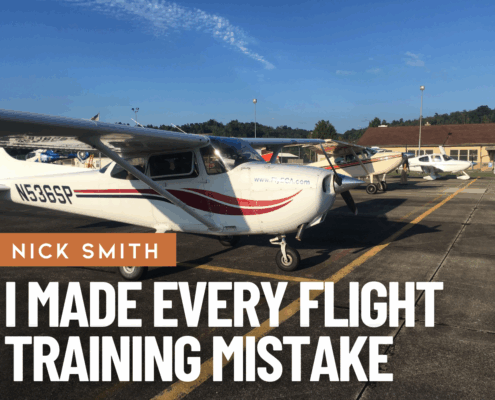
I Made Every Flight Training Mistake Humanly Possible
I Can't Believe I Did ThatFlight training is rarely a straight line, but for Nick Smith it turned into a winding, four–year journey full of delays, false starts, and unexpected costs. In this brutally honest account, he shares the mistakes he made—so future pilots don’t have to repeat them. His story is both a cautionary tale and a reminder that perseverance can still lead to the certificate.
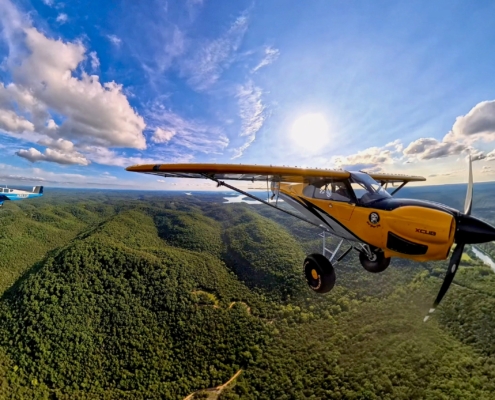
Friday Photo: Classics, Old and New
Friday PhotoTwelve days without flying is hard on the psyche. Finally, a break in the rains allowed me to hop up in the cub. My buddy, Brady, reached out, and we connected on the air to air frequency. He had to drag everything to slow to cub speeds for a brief interlude in the sky. An original classic with a new model based on a classic, made for a memorable encounter.

Captain’s Authority
I was thereAs a TWA B-747 Captain, I was scheduled to fly TWA 800 from JFK to Paris (CDG). When I reported for my flight at the hangar at JFK, I was greeted by a Check Pilot who told me he was going to give me an unannounced checkride to Paris and back. I told him that was not going to happen—I was not going to allow him into my flight deck.
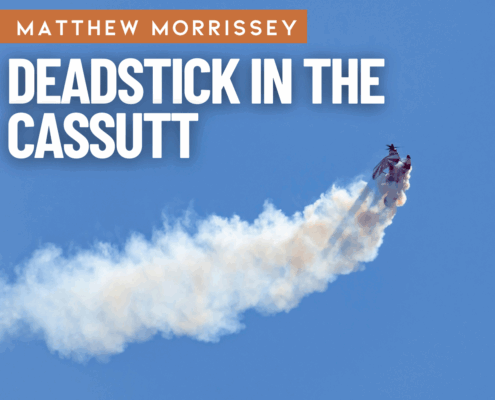
Deadstick in the Cassutt
I was therejust ahead, I spotted an overpass with a parallel frontage road running downhill, lined with trees. Instinct took over. I pulled over the trees, lined up with the road, and held centerline while the branches whipped by on either side. Too fast, and it was my first Cassutt landing. I kicked rudder to skid and scrub off speed. Just as I was about to set down, I noticed a single power line crossing the road. Normally I’d slip under it, but the only car on the road was about to pass underneath at the same time. Now too slow to climb over, I slid under the wire and over the car, then touched down safely.
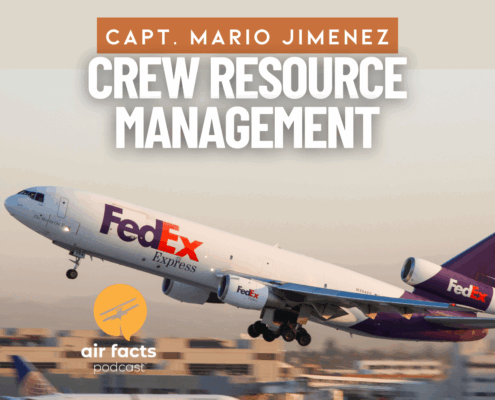
Podcast: Effective Crew Resource Management with Capt. Mario Jimenez
PodcastIn this episode of the Airfacts Podcast, we delve into the critical role of character and discipline in crew resource management with pilot and human factors expert Mario Jimenez. Drawing from his extensive experience as a naval aviator and human factors manager at FedEx, Mario shares insights on how character shapes a pilot's ability to manage resources effectively.
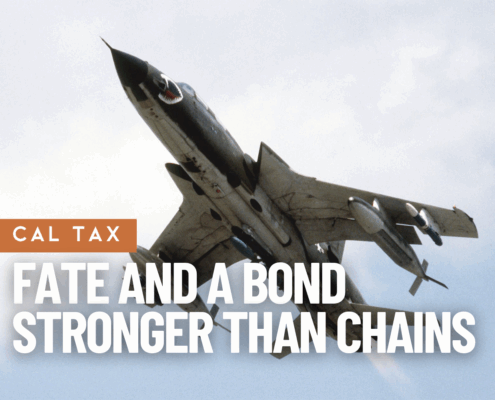
Fate and a Bond Stronger than Chains
Veterans' StoriesI thought about an incredible group of people I’ve known through my Air Force and Vietnam experiences. We share a bond that is unpredictable, yet deeply real and emotional. It’s also a story about how we think we control our lives, but fate often determines our destiny.
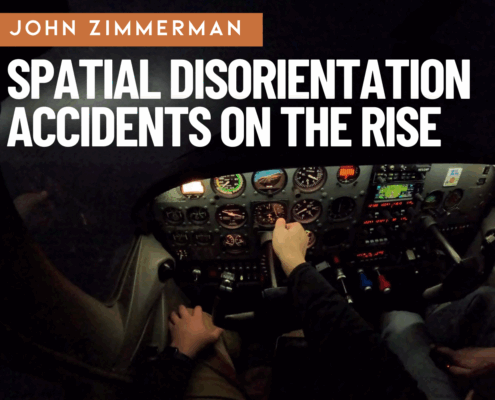
Why are spatial disorientation accidents on the rise?
John's blogResearchers from the FAA show that SD accidents have not declined since 2003—in fact, quite the opposite. You might assume the widespread adoption of tools like datalink weather, modern autopilots, reliable AHRS, and electronic flight bag apps would make VFR-into-IMC (the classic SD accident scenario) much less common. It’s a great theory, but the numbers don’t support it.

Friday Photo: IFR Over Saginaw, Michigan
Friday PhotoCrusing at 13,000 feet between layers and around columns, we were enjoying 200+ knots over the ground in smooth air with some gorgeous views.

My Superbowl: A 9,000-Mile Pickleball Flight Around America
My AdventureOn May 1, 2023, I set out in N148DW, my 2013 Cessna Turbo 206, in search of a world record: the 48-48-48 Pickleball Challenge—playing pickleball in 48 states in fewer than 48 days. It was as much a pickleball record attempt as it was an aviation feat. Either way, it promised to be a ton of fun.

Corrosion Where You Least Expect It
I was there, UncategorizedOur aircraft have annual inspections. And during those inspections, areas are opened and examined for deficiencies, including corrosion. Areas that we use daily and those small hard to get to locations are examined as well. As it turns out, corrosion can show up where you least expect it. Specifically, in the guy sitting at the controls flying the aircraft through the sky.
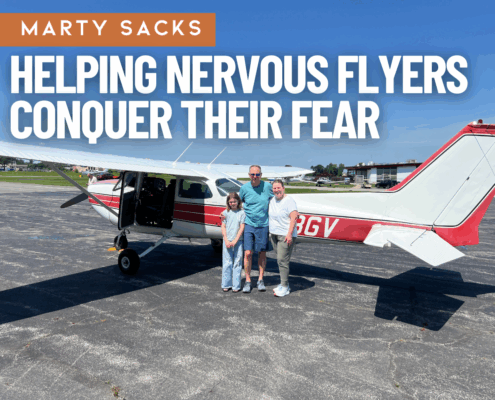
Helping Nervous Flyers Conquer Their Fear
I was thereI was recently asked by a fellow flying club member to take his wife—a fearful flyer—on a flight. Spoiler alert: the flight went well, and my friend’s wife got out of the airplane grinning from ear to ear. Here’s what I did before and during the flight, and what I learned.

VIA The Poles: Journey Around the World’s Ultimate Flight Path
I was there, My AdventureI was part of a four-person crew that completed a Polar Circumnavigation Diploma flight in May 2025 in a 1976 Learjet 36A, S/N 022, N31GJ. If the application is accepted, it will be the fourth aircraft to meet the FAI Polar Circumnavigation Diploma requirements. The flight served as a fundraiser for the Classic Learjet Foundation, which is currently restoring Learjet 23 S/N 003, the first Learjet delivered to a customer in 1964. The now-vintage Learjet 36A completed the 26,291-mile flight without any issues or maintenance delays.
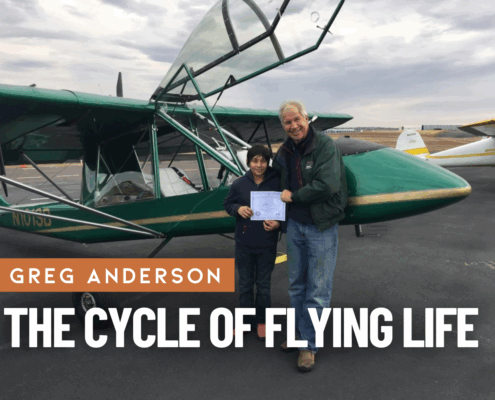
The Cycle of Flying Life
OpinionMemories of first flights will include astonishing detail. That first transition—from wheels to wings—is a sensory overload, an oh-my-gosh experience. Most will remember where, when, and what type airplane. Sights, sounds, even smells. And, of course, special thoughts are reserved for the pilot who gave them their first flight.
